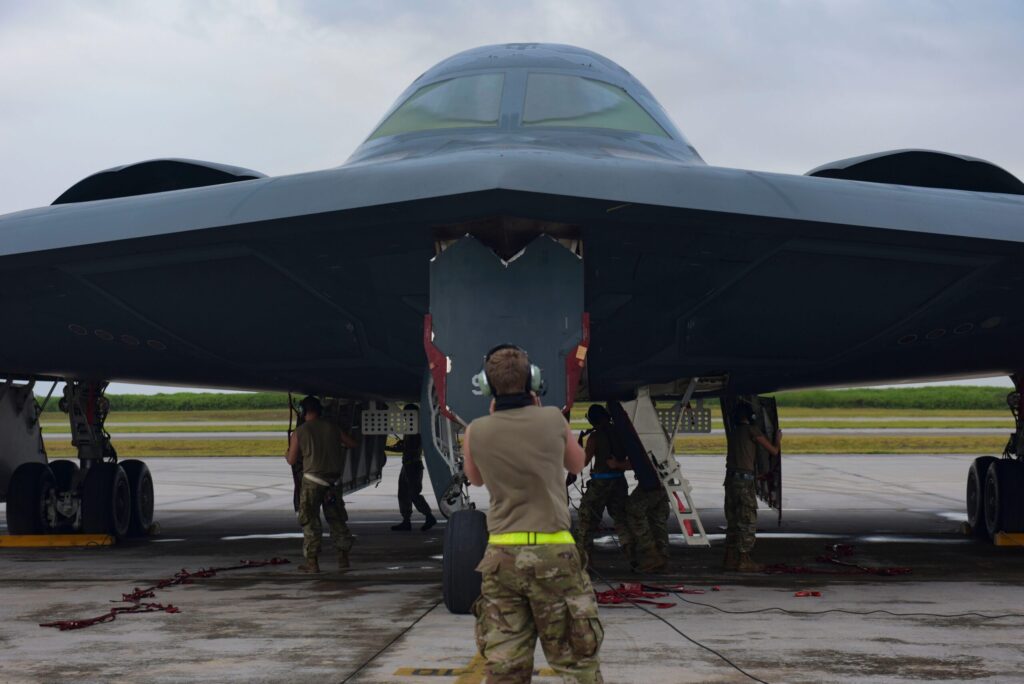Donald Trump’s tariffs amount to the biggest de facto consumer tax hike in modern US history, hitting a $30 trillion economy where domestic consumer spending drives 70 percent of GDP.
The US president’s whopping 145 percent tariff on Chinese imports also ensures that Beijing will fall well short of its 5 percent politburo-sanctioned GDP growth target.
Meanwhile, Europe is on the precipice of a structural economic slump as its constellation of industrial exports is devastated by the protectionist firestorm in Washington.
A global recession is thus inevitable.
Projections of 1.1 million barrels per day (bpd) consumption growth in 2025 have now morphed into zero growth – or even demand destruction.
The US investment bank Goldman Sachs has slashed its Brent target three times in the past month, warning of $40 crude in an “extreme” market scenario. This time, the wolf is real and the wolf is here.
On April 3 eight Opec+ producers – Saudi Arabia, Russia, Iraq, UAE, Kuwait, Kazakhstan, Algeria and Oman – amplified angst in the global crude market by tripling their collective May output increase to 411,000 bpd.
The surprise decision was announced amid a global market crash, a day after Trump’s “Liberation Day” unleashed a barrage of punitive international tariffs. The timing was no coincidence.
Just four days later on April 7 Saudi Arabia fired what can be seen as a warning shot at Opec+ quota violators.
The kingdom directed the state-owned energy giant Aramco to slash its posted price for Ras Tanura Arabian Light cargoes by $2 a barrel, demonstrating that it will not surrender downstream market share in Asia without a fight.
This strategic move triggered what has become a 20 percent fall in Brent and WTI light sweet crude prices since late March.
This is a death spiral eerily reminiscent of past oil market crashes like the “ghosts of Jakarta” in 1997, when Brent bottomed at $10, and Saudi Arabia’s campaign against Texan shale, which pummelled prices from $115 in June 2014 to $28 in 2016.
In the last oil price war, between Saudi Arabia and Russia in the early days of the Covid-19 pandemic, crude plunged to $20 in the spot market and to negative $37 in futures, as storage facilities from Oklahoma to the North Sea ran dry.
Saudi Arabia’s latest warning is aimed primarily at Kazakhstan, Iraq and Russia. But several other Opec+ states are quietly exceeding their output quotas as well.
With the lowest drilling costs, the largest reserves and spare capacity and a voluntary 1 million bpd cut still up its sleeve, Riyadh holds all the cards. Releasing just 500,000 extra barrels could be enough to crash prices.
Geopolitical game theory may explain why Saudi Arabia has chosen this dangerous moment to engage in a game of swing producer chicken with its supposed “allies”.
The current White House’s biggest mid-term election risk is an inflation spike triggered by tariff-induced supply shocks. When Trump secured a second term last November, he promised to bring down gasoline prices.
To help Washington deliver on that pledge to Trump’s MAGA base, Saudi Arabia stepped in, setting the stage for his upcoming state visit to the GCC as a gesture of gratitude and strategic alignment.
Another plausible explanation lies in Diego Garcia, where B-2 stealth bombers armed with 40,000-pound bunker busters have been quietly deployed.
Their presence points to a contingency plan: if high-stakes nuclear talks in Oman collapse and Trump orders a blitzkrieg on Iran’s nuclear infrastructure, Riyadh’s reserve barrels could be released to soften the blow of any war-induced supply shock.
Falling oil prices will only embolden the cash-strapped regimes of Astana, Baghdad, Erbil and a post-sanctions Moscow to ramp up quota violations
Even at $60 a barrel, the downside risk in Brent crude far outweighs its upside potential, especially if kinetic warfare erupts with Iran.
Hedge funds are already positioned short across the Chicago, London and Singapore futures markets.
Meanwhile, Trump’s tariff blitz and the $12 trillion wipeout in global equities have delivered a double blow to growth and sentiment, setting the stage for unavoidable demand destruction in the wet barrel market.
Falling oil prices will only embolden the cash-strapped regimes of Astana, Baghdad, Erbil and a post-sanctions Moscow to ramp up quota violations.
As for the Dragon Empire, the world’s largest oil importer, the full impact of Washington’s tariff offensive remains both unknown and unknowable at this early stage.
But net-net, the summer of 2025 could see Brent crude crash into the low $50s, or even further, toward Goldman Sachs’ $40 extreme-case scenario. The heat is on.
Matein Khalid is an investor in global financial markets and board adviser to leading family offices in the UAE and Saudi Arabia
Register now: It’s easy and free
This content is available for registered members only. Register for your free account today for exclusive emails, special reports and event invitations.
Why sign up
Exclusive weekly email from our editor-in-chief
Personalised weekly emails for your preferred industry sectors
Read and download our insight packed white papers
Access to our mobile app
Prioritised access to live events
Already registered? Sign in



